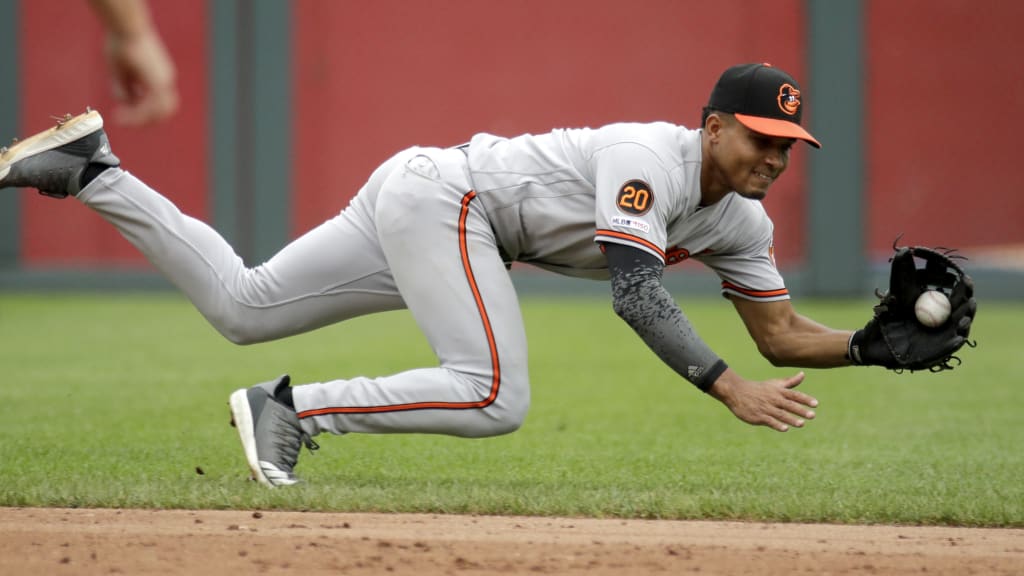
Hello again and welcome to another edition of our Orioles Inbox, which we’ll be publishing weekly throughout the winter. Thank you again for your participation; these would not be possible without it.
Now that the World Series is upon us, the real offseason could be less than a week away. Let’s use this opportunity to take a look at how the Orioles’ roster and organization is shaping up for 2020 by diving into another batch of your questions.
Those are two big questions, and ultimately they are tied to one another. All things being equal, Richie Martin seems like an obvious candidate to begin the year in Triple-A, where he’d get the chance to develop offensively in ways playing regularly at the big league level in 2019 didn’t allow. Martin, who didn’t play above Double-A before last season, clearly improved at the plate as the year went on, especially as the Orioles limited his exposure to right-handed pitching:
First half: .166/.226/.282, 4 HR, 5 SB, 11 extra base hits in 198 plate appearances
Second half: .284/.321/.392, 2 HR, 5 SB, 6 XBH in 111 plate appearances
Vs. righties: .170/.217/.296, 3 HR, 4 SB, 9 XBH in 146 PA
Vs. lefties: .243/.298/.345, 3 HR, 6 SB, 8 XBH in 163 PA
This all translated to a .208/.260/.322 overall line, six home runs in 309 plate appearances and a 54 OPS+. By that last metric, Martin was the third-worst offensive player in baseball (minimum 300 plate appearances). The Orioles like Martin. They think his athleticism and defensive ability give him real upside. But the motive for giving him everyday at-bats at Triple-A is clear -- if there were a clear option to replace him.
And that is where this situation gets sticky. The truth is, there really isn’t much shortstop competition internally at the moment. No. 24 prospect, per MLB Pipeline, Mason McCoy hasn’t played about Double-A either. Triple-A is populated with versatile depth-types like Jack Reinheimer, Jose Rondon and Engel Vielma, but few long-term solutions. And there is a good chance the club looks to trade Jonathan Villar, who made 73 starts at shortstop in 2019, this winter. Besides that, Hanser Alberto can play short in a pinch. But the roster is otherwise devoid of experience at the position.
So maybe Martin remains. Maybe he lights the world on fire in camp and this becomes less of a question mark. My guess is the Orioles go outside the organization for depth, perhaps on a low-risk veteran like Alcidies Escobar last winter (this year’s market includes Starlin Castro, Jose Iglesias, Freddy Galvis and Adeiny Hechavarria). And with Martin not tethered to the roster by his Rule 5 status, he’ll need to compete for his Major League job next spring.
There is a chance the Orioles hire at the assistant general manager level this winter. But if they do, it’d probably be for an executive whose responsibilities would range beyond the narrow purview of domestic scouting. There are no immediate plans to hire a traditional scouting director, according to a team source who described the possibility as “unlikely.”
As of now, supervisor of domestic scouting operations Brad Ciolek handles day-to-day management of the amateur side of the scouting department, reporting directly to executive vice president and general manager Mike Elias, who makes final decisions with input from vice president and assistant general manager, analytics Sig Mejdal and his analytics team.
The club’s professional and international scouting initiatives are run by Mike Snyder (pro scouting) and Koby Perez (international scouting), who have director-level titles. The recent hiring/promotions of Matt Blood (player development), Chris Holt (pitching) and Kevin Buck (baseball admin) to director-level positions hinted that the Orioles might do the same with amateur scouting, but I’m told that’s not on the horizon.
Part of it is Elias and Mejdel’s deep roots in amateur scouting. Another part is the collaborative nature of the practice circa 2019, and the modern workflow pathways the Orioles hope to build. Technically, Mejdel is in charge of analytics. But the reality is, he and his team are involved heavily on the scouting side -- especially at the amateur level -- as well as in player development and with Major League operations.
(As part of last month’s restructuring, Hendrik Herz and Chat Tatium were promoted to newly-created positions of “scouting analysts,” which never existed before with the Orioles and reflect the hybrid-nature of scouting jobs in the modern baseball landscape.)
Another part is, given the nascent stage of the Orioles’ rebuild, this is where some of the organization’s most important decisions lay. They will continue to command more personal involvement from Elias and Mejdel going forward.
The Orioles acquired Dillon Tate, Cody Carroll and Josh Rogers for Zach Britton in July 2018. So far, the trade hasn’t bore much fruit for Baltimore, as that trio has pitched to a combined 8.02 ERA over 64 Major League innings.
Rogers, 25, underwent his second Tommy John surgery this summer and is expected to miss much of the 2020 season. Carroll, 27, missed all of ‘19 with back issues before returning to the mound in the Arizona Fall League last month. Both will be in precarious positions roster-wise when the Orioles clear 40-man space prior to the Rule 5 Draft.
The club remains intrigued by Tate, who transitioned full-time into a relief role this year, made his Major League debut in July and appeared in 16 games down the stretch. Tate, 25, is attending the highly-touted developmental facility Driveline in Seattle this winter with an eye toward the honing the ability that once made him the No. 4 overall pick in the 2015 Draft. But he’ll have to improve on the 6.43 ERA he posted as a rookie to shed the trade in a better light.



